Results
-
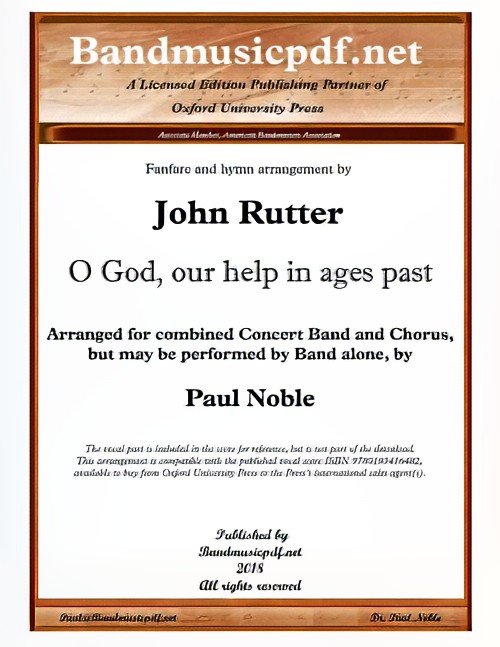 £75.00
£75.00O God, Our Help in Ages Past (Concert Band with Optional Choir - Score and Parts) - Rutter, John - Noble, Paul
Considered one of the finest paraphrases written by Isaac Watts, O God, Our Help in Ages Past expresses a strong note of assurance, promise, and hope as recorded in the first part of Psalm 90. This Festive fanfare and hymn arrangement by John Rutter, adapted by Paul Noble, makes a powerful piece for combined Concert/Wind Band and Chorus, one that is a very accessible and a worthy addition to the repertoire of the Concert Band.
Estimated dispatch 7-14 working days
-
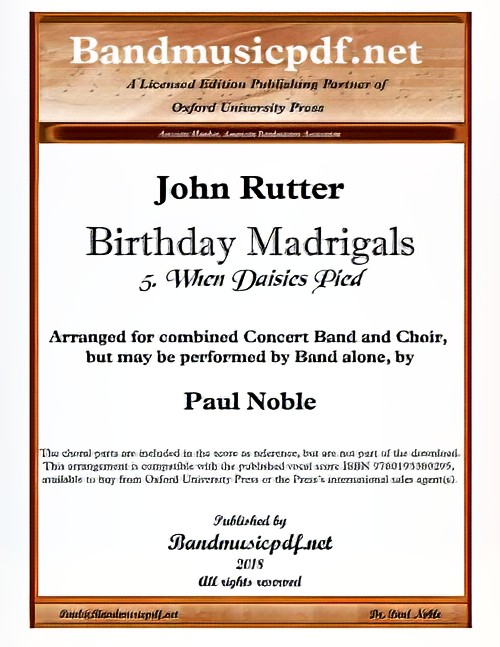 £90.00
£90.00When Daisies Pied (from Birthday Madrigals) (Concert Band with Optional Choir - Score and Parts) - Rutter, John - Noble, Paul
Birthday Madrigals was written in 1995 to celebrate the seventy-fifth birthday of the great jazz pianist, George Shearing. This arrangement is written for combined band and choir, but may be performed by band alone. In honour of George Shearing's noted style, a vibes part has been added to this arrangement, as well as an optional piano part. The original setting was a suite of five movements. The arranger has chosen three of the movements, numbers 1, 3 and 5, because of their similarity in style. This is a special opportunity for Concert Bands, or combined Concert Bands and Choirs, to perform in a true jazz medium, featuring a set drummer and string bass along with the full band.
Estimated dispatch 7-14 working days
-
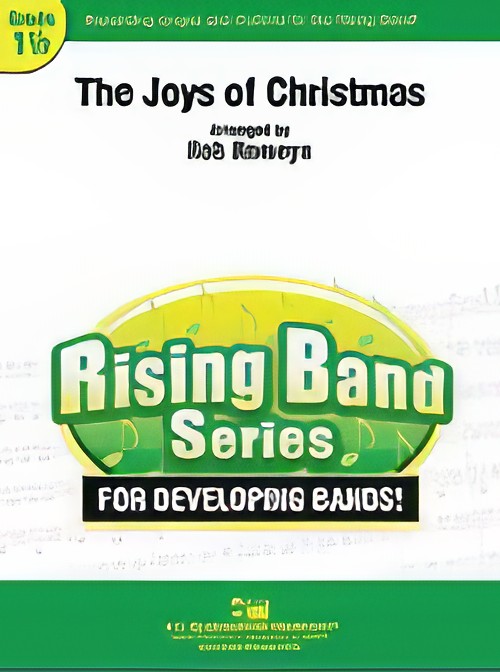 £49.00
£49.00The Joys of Christmas (Concert Band - Score and Parts) - Romeyn, Rob
A festive and fresh holiday concert opener for beginning band that is sure to be a favorite for both performers and audiences. "Good King Wenceslas" is used as the basis for the work, crafted in a powerful and effective setting. A very creative and lyrical interlude of "Jingle Bells" serves as a beautiful musical moment before the piece ends as it began, powerfully festive. Easy to play and easy to put together, this wonderful selection is also appropriate for more advanced groups with limited rehearsal time. Be sure to include "The Joys of Christmas" in your next holiday concert! Duration: 2.00
Estimated dispatch 7-14 working days
-
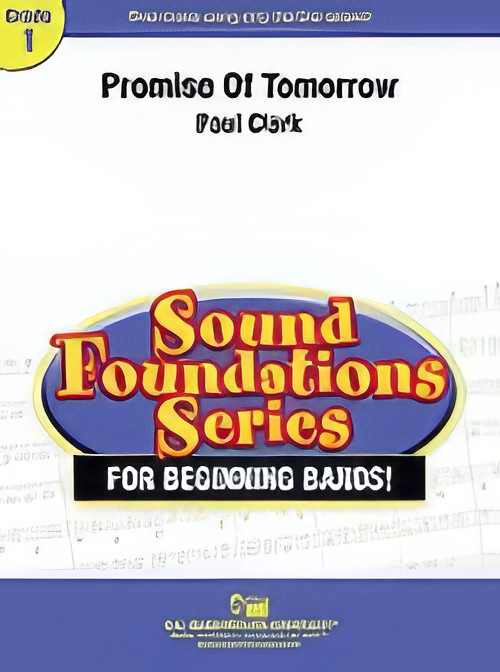 £45.00
£45.00Promise of Tomorrow (Concert Band - Score and Parts) - Clark, Paul
Filled with musicality while only using notes from the Bb concert scale, "Promise of Tomorrow" is an impressive concert or festival piece! The contrasts between gentle lyrical passages and bold full ensemble sections provide numerous teaching opportunities. Abundant use of cues assures a full sound, even with limited instrumentation. Guaranteed to give your students a positive performing experience, which is so important at this level. Very highly recommended! Duration: 2.15
Estimated dispatch 7-14 working days
-
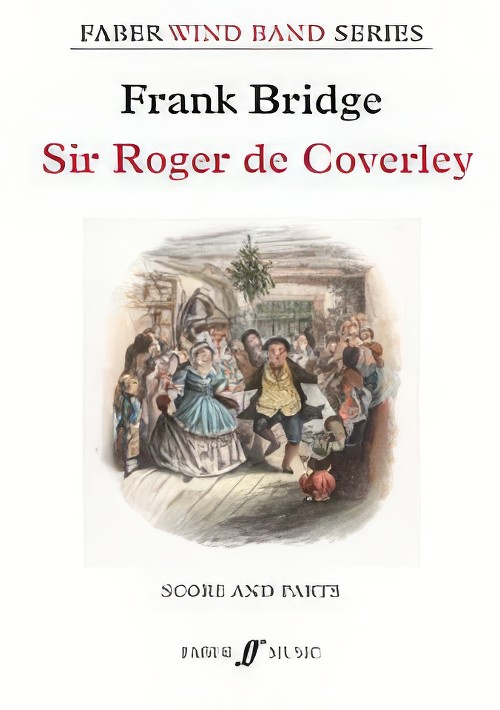 £79.99
£79.99Sir Roger de Coverley (Concert Band - Score and Parts) - Bridge, Frank - Wheeler, Alastair
Frank Bridge (1879 - 1941) was one of the leading English composers of his time. In October 1922 he adapted his popular string quartet Sir Roger de Coverley for full symphony orchestra and Sir Henry Wood agreed, at the last minute, to include it in the last night of the Queen's Hall Promenade Concerts at the end of that month. This elaborate and colourful orchestral version has never been widely performed, but has now been brilliantly transcribed by Alastair Wheeler to provide a miniature dance poem for grade 5 level concert band. Bridge's lively treatment of one of England's most famous traditional dance melodies will make a fitting end to any concert, with the strains of Auld Lang Syne introduced by Bridge as a nod towards Sir Roger de Coverley's traditional function as the final dance of a Christmas Ball, as it was in Old Mr. Fezziwig's party in Dickens' A Christmas Carol.
Estimated dispatch 7-14 working days
-
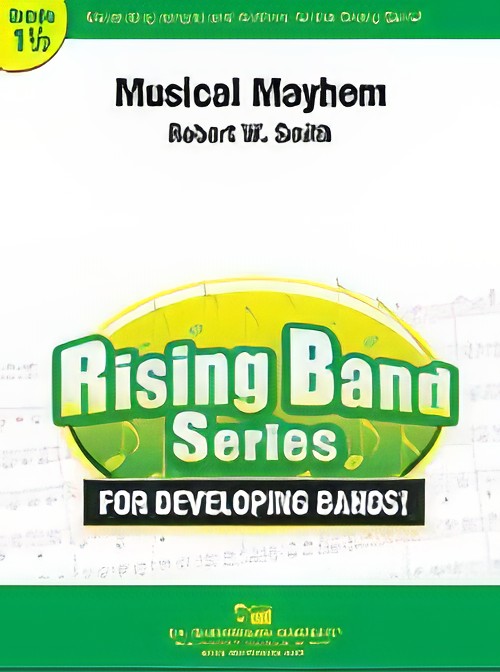 £49.00
£49.00Musical Mayhem (Concert Band - Score and Parts) - Smith, Robert W.
This lighthearted and fun work serves as a humorous scherzo in your concert program. Individual sections of the band are featured as they interject dissonant and dynamic effects in an otherwise traditional musical line. Each section of the band joins in the fun leading to a humorous and exciting conclusion. Excellent and enjoyable programming for your next concert! Duration: 2.00
Estimated dispatch 7-14 working days
-
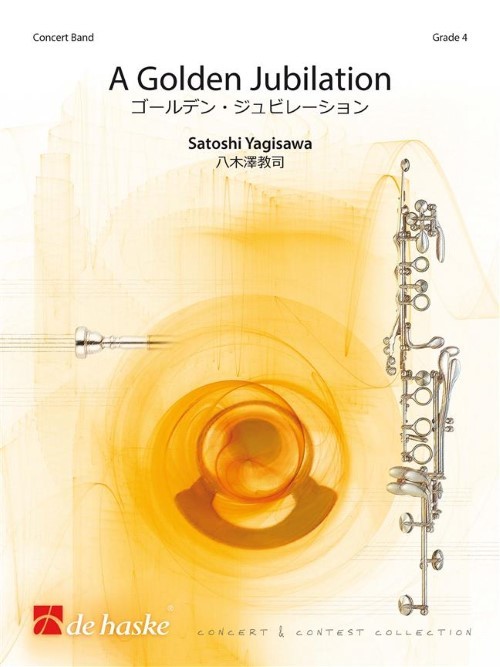 £84.99
£84.99A Golden Jubilation (Concert Band - Score and Parts) - Yagisawa, Satoshi
This work was composed as a commission by the Aikodai Meiden High School Symphonic Band, for the 50th anniversary of their annual concert; the title A Golden Jubilation is a reference to this. The close friendship between Hiroki Ito, the conductor of the band, and Satoshi Yagisawa resulted in this brilliant and exhilarating fanfare of approximately two minutes in length; the piece is ideal to use as a concert opener. The original composition was arranged for an extremely wide range of instruments and a band of 200 musicians, including a separate 'banda', harp and a variety of special instruments. This version has been rescored for standard band instrumentation by the composer himself. Duration: 2.20
Estimated dispatch 7-14 working days
-
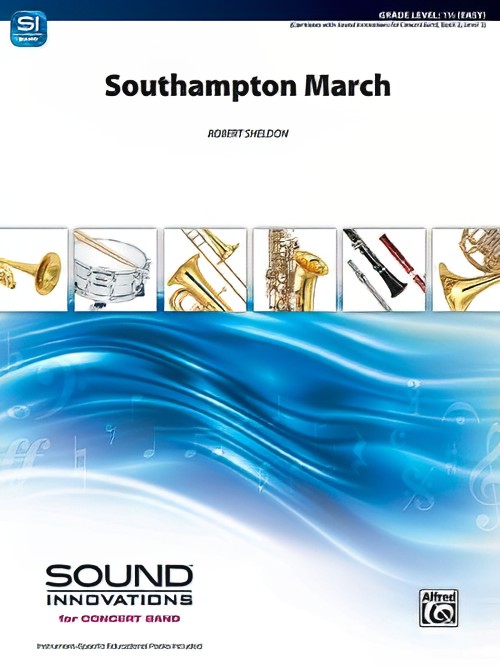 £52.95
£52.95Southampton March (Concert Band - Score and Parts) - Sheldon, Robert
The charm and style of a British-style march is brought "to the fore" in this delightful concert march for young band. Tuneful melodies reminiscent of folk tunes create a tasty palette with which to open a concert or festival performance. Duration: 1:45
Estimated dispatch 7-14 working days
-
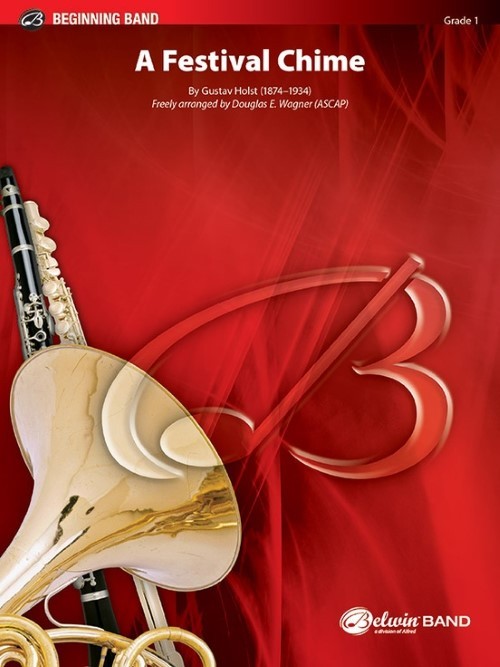 £51.50
£51.50A Festival Chime (Concert Band - Score and Parts) - Holst, Gustav - Wagner, Douglas E.
The third movement of Opus 34 (Three Festival Choruses), which Gustav Holst penned in 1916, was originally scored for chorus with piano, orchestra, or military band. The easily recognized melody is a nineteenth century Welsh ballad, known to most as the hymn tune "St. Denio," set to the words of English poet, Clifford Bax. In 3/4, this characteristically delightful Holst theme has been freely arranged to incorporate elements of his original score with additional material included to heighten musical interest for contemporary concert bands and audiences alike. As the title implies, chimes are an integral part of this arrangement; however, there are alternate options provided in the program notes if a suitable instrument is unavailable. This musical setting is complete with a variety of teaching and performance opportunities and a perfect fit for beginning concert bands. Duration: 2.00
Estimated dispatch 7-14 working days
-
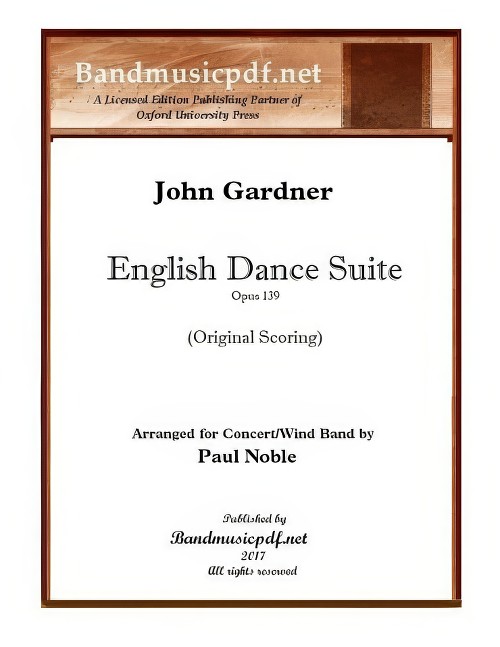 £495.00
£495.00English Dance Suite (Concert Band - Score and Parts) - Gardner, John - Noble, Paul
Original Scoring. Arranged for the modern Concert/Wind Band, scored for three trumpets, reasonable doubling of parts where the original musical effect is not altered so that players can have a more responsible and enjoyable experience, more legible parts with less doubling on one staff, etc. The piece is offered either as a complete suite of seven movements, and also as seven individual movements which may be purchased independently. The English Dance Suite was originally composed by John Gardner for Wind Band, and has been re-set for the modern Concert Band instrumentation. Both the original version, edited and type-set by Paul Noble, and this arrangement are first editions now available for purchase to bands around the world. The set of seven Renaissance dances depict John Gardner's love of Scottish music, the Renaissance heritage, and some of his own mischievous approach to music. The first movement, Chacony on a Golden Theme, reminiscent of the Allegro movement of Purcell's Golden Sonata, is much used as a vehicle for variation on a repeated short harmonic progression, often involving a fairly short repetitive bass-line which offered a compositional outline for variation, decoration, figuration and melodic invention. In this it closely resembles the passacaglia. The Alman originated in the 16th century as a duple metere dance of moderate tempo, already considered very old, with a characteristic double-knocking upbeat of one or occasionally three sixteenth notes. It appears to have derived from a German dance but no identifiable dance and no German dance instructions from this era survive. The Hornpipe, usually in 3/2 dance rhythm, is an Irish, Scottish and English dance. It is done in hard shoes, which are used to help keep track of how the dancer keeps in time. There are two variations of the hornpipe dance: fast and slow. Usually, more experienced dancers will do the slow hornpipe but younger dancers will start out with the fast hornpipe and then switch in later years. The Corranto is a 16th-century court dance characterized by short advances and retreats, in quick triple time. The Volta (Italian: the turn or turning) is an anglicised name from the later Renaissance. Its main figure consisted of a turn and lift in a sort of closed position. The Pavan is a slow processional dance common in Europe during the 16th century. The Reel, indigenous to Scotland, consists largely of quaver (eighth note) movement with an accent on the first and third beats of the bar.
Estimated dispatch 7-14 working days
